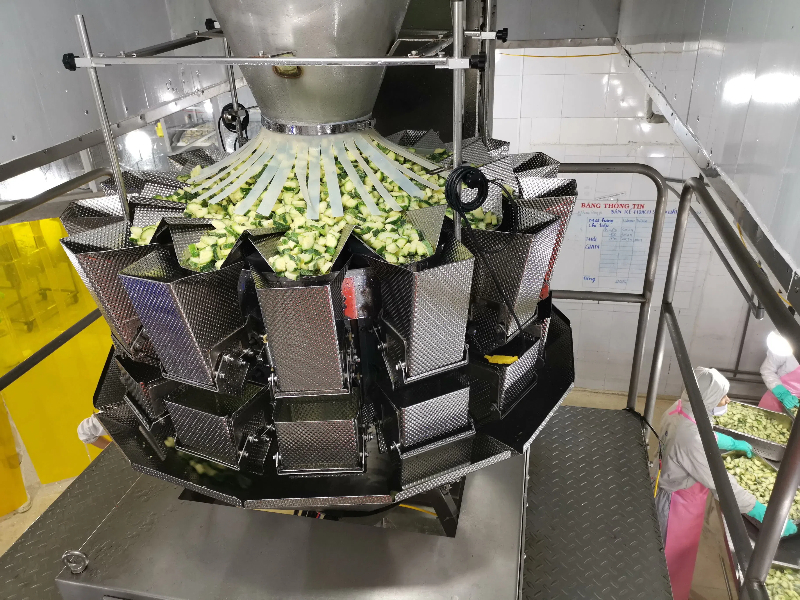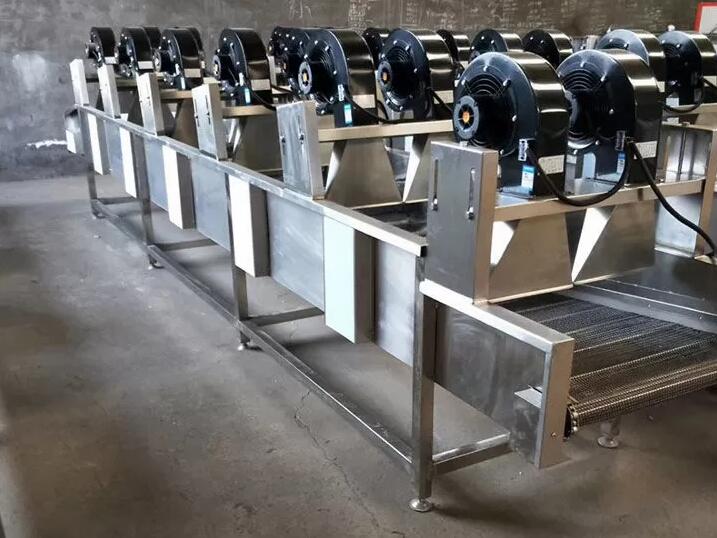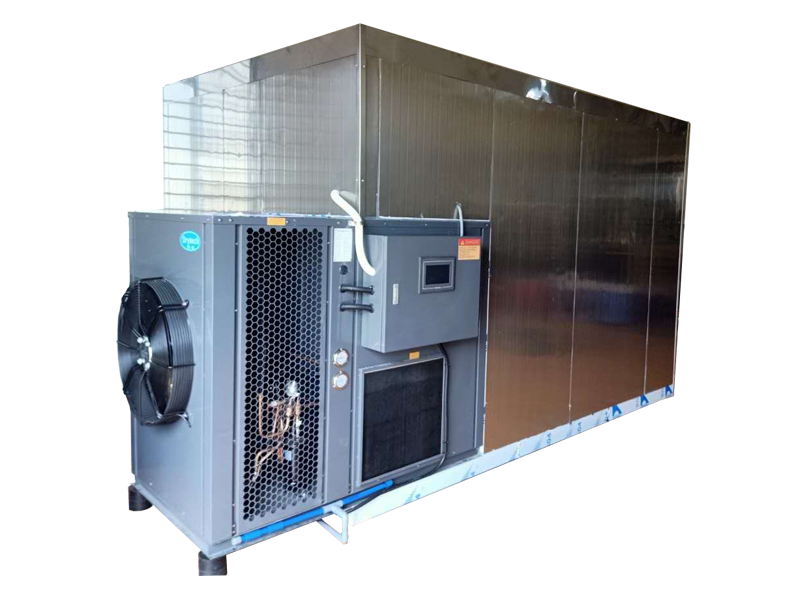
Content Menu
● Introduction
● Understanding Automatic Dry Food Packaging Machines
>> Key Components of an Automatic Dry Food Packaging Machine
● Benefits of Implementing Automatic Dry Food Packaging Machines
>> 1. Increased Efficiency and Productivity
>> 2. Improved Accuracy and Consistency
>> 3. Enhanced Food Safety and Hygiene
>> 4. Cost Savings in the Long Run
>> 5. Versatility in Packaging Options
● Applications of Automatic Dry Food Packaging Machines
>> 1. Snack Food Industry
>> 2. Grain and Cereal Packaging
>> 3. Pet Food Packaging
>> 4. Coffee and Tea Packaging
>> 5. Confectionery Packaging
● Latest Innovations in Automatic Dry Food Packaging Machines
>> 1. Integration of Artificial Intelligence
>> 2. Sustainable Packaging Solutions
>> 3. Enhanced Connectivity
>> 4. Improved Flexibility
● Choosing the Right Automatic Dry Food Packaging Machine
>> 1. Production Volume
>> 2. Product Characteristics
>> 3. Packaging Requirements
>> 4. Space Constraints
>> 5. Budget
● Maintenance and Care of Automatic Dry Food Packaging Machines
● The Future of Automatic Dry Food Packaging
● Conclusion
● Frequently Asked Questions
>> 1. What types of dry foods can be packaged using an automatic dry food packaging machine?
>> 2. How do automatic dry food packaging machines ensure accurate product weight?
>> 3. What is the average lifespan of an automatic dry food packaging machine?
>> 4. Can automatic dry food packaging machines handle different bag sizes and styles?
>> 5. How do automatic dry food packaging machines contribute to food safety?
Introduction
In today's fast-paced food industry, efficiency, precision, and hygiene are paramount. Automatic dry food packaging machines have emerged as game-changers, offering unparalleled solutions to businesses of all sizes. These sophisticated pieces of equipment are transforming how we package dry foods, from grains and nuts to snacks and pet food. This comprehensive guide will delve into the world of automatic dry food packaging machines, exploring their benefits, applications, and the latest innovations in the field.
Understanding Automatic Dry Food Packaging Machines
Automatic dry food packaging machines, also known as dry food packaging equipment, are advanced systems designed to automate the process of measuring, filling, and sealing packages of dry food products. These machines integrate various components, including weighing systems, filling mechanisms, and sealing units, to create a seamless packaging process.

Key Components of an Automatic Dry Food Packaging Machine
1. Multi-head weigher: Ensures accurate portioning of products
2. Vertical form fill seal (VFFS) unit: Creates bags from roll stock film
3. Product delivery system: Transports product from storage to packaging
4. Control panel: Manages all machine functions and settings
5. Sealing mechanism: Ensures airtight package closure
Benefits of Implementing Automatic Dry Food Packaging Machines
1. Increased Efficiency and Productivity
By automating the packaging process, these machines significantly boost production rates. A high-speed food packaging machine can handle hundreds of packages per minute, far outpacing manual packaging methods.
2. Improved Accuracy and Consistency
Automated food bagging systems utilize precise weighing mechanisms, ensuring that each package contains the exact amount of product specified. This level of accuracy is crucial for regulatory compliance and customer satisfaction.
3. Enhanced Food Safety and Hygiene
Minimizing human contact with food products reduces the risk of contamination. Industrial food packaging machinery is designed with hygiene in mind, often featuring stainless steel construction and easy-to-clean components.
4. Cost Savings in the Long Run
While the initial investment in an automatic dry food packaging machine may be significant, the long-term benefits often outweigh the costs. Reduced labor requirements, minimized product waste, and increased output all contribute to a healthy return on investment.
5. Versatility in Packaging Options
Modern packaging machines offer flexibility in bag sizes, styles, and materials. From small snack-sized portions to large bulk packages, these machines can be adjusted to meet various packaging needs.

Applications of Automatic Dry Food Packaging Machines
The versatility of these machines makes them suitable for a wide range of industries and products:
1. Snack Food Industry
Snack food packaging automation has revolutionized the production of chips, nuts, and other snack items. These machines can handle delicate products without causing breakage.
2. Grain and Cereal Packaging
Bulk dry food packers are ideal for packaging large quantities of grains, rice, and cereals efficiently and hygienically.
3. Pet Food Packaging
The pet food industry benefits greatly from granular product packaging systems, which can handle various kibble sizes and shapes.
4. Coffee and Tea Packaging
Precise weighing systems ensure that each package of coffee beans or tea leaves contains the exact amount specified.
5. Confectionery Packaging
From chocolates to candies, these machines can delicately handle and package a variety of confectionery products.
Latest Innovations in Automatic Dry Food Packaging Machines
The field of food packaging is constantly evolving, with new technologies emerging to meet the changing needs of the industry and consumers.
1. Integration of Artificial Intelligence
AI-powered systems are being incorporated into packaging machines to optimize performance, predict maintenance needs, and adjust settings in real-time based on product characteristics.
2. Sustainable Packaging Solutions
Many modern machines are designed to work with eco-friendly packaging materials, supporting the industry's move towards sustainability.
3. Enhanced Connectivity
Industry 4.0 principles are being applied to packaging machines, allowing for remote monitoring, data collection, and integration with other production line equipment.
4. Improved Flexibility
New machines offer quick changeover capabilities, allowing manufacturers to switch between different products and package sizes with minimal downtime.
Choosing the Right Automatic Dry Food Packaging Machine
Selecting the appropriate packaging machine for your business requires careful consideration of several factors:
1. Production Volume
Consider your current and future production needs. A high-speed food packaging machine might be necessary for large-scale operations, while smaller businesses might opt for more compact solutions.
2. Product Characteristics
The nature of your product (size, shape, fragility) will influence the type of machine you need. Some products may require specialized handling or dosing systems.
3. Packaging Requirements
Consider the types of packages you need to produce, including bag styles, sizes, and materials.
4. Space Constraints
Evaluate the available floor space in your facility and choose a machine that fits comfortably while allowing for operator access and maintenance.
5. Budget
While it's important to consider the initial cost, also factor in long-term savings, efficiency gains, and potential for increased production.
Maintenance and Care of Automatic Dry Food Packaging Machines
Proper maintenance is crucial for ensuring the longevity and optimal performance of your packaging equipment:
1. Regular cleaning and sanitization
2. Scheduled maintenance checks
3. Prompt replacement of worn parts
4. Proper training for operators
5. Adherence to manufacturer guidelines
The Future of Automatic Dry Food Packaging
As technology continues to advance, we can expect to see even more innovative features in automatic dry food packaging machines:
1. Greater integration of robotics for enhanced automation
2. Improved energy efficiency
3. More sophisticated quality control systems
4. Enhanced customization capabilities
5. Increased use of biodegradable and compostable packaging materials
Conclusion
Automatic dry food packaging machines represent a significant leap forward in food packaging technology. By offering increased efficiency, improved hygiene, and versatile packaging options, these machines are becoming indispensable in the modern food industry. As businesses strive to meet growing consumer demands and stringent regulatory requirements, investing in efficient food packaging solutions becomes not just an option, but a necessity for staying competitive in the market.
Whether you're a small artisanal food producer or a large-scale manufacturer, there's an automatic dry food packaging machine suited to your needs. By carefully considering your requirements and staying informed about the latest innovations in the field, you can make an informed decision that will benefit your business for years to come.
As we look to the future, it's clear that automatic dry food packaging machines will continue to evolve, offering even more advanced features and capabilities. Embracing this technology today can position your business at the forefront of the food packaging industry, ready to meet the challenges and opportunities of tomorrow.

Frequently Asked Questions
1. What types of dry foods can be packaged using an automatic dry food packaging machine?
Answer: Automatic dry food packaging machines are versatile and can handle a wide variety of products including grains, nuts, seeds, snack foods, cereals, pet food, coffee beans, tea leaves, spices, and many types of powdered or granulated foods.
2. How do automatic dry food packaging machines ensure accurate product weight?
Answer: These machines typically use multi-head weighers or combination scales. The system dispenses product into multiple weighing heads, then combines the contents of select heads to achieve the target weight. This method ensures high accuracy and efficiency.
3. What is the average lifespan of an automatic dry food packaging machine?
Answer: With proper maintenance and care, a high-quality automatic dry food packaging machine can last 10-15 years or more. However, the exact lifespan depends on factors such as usage intensity, maintenance regularity, and the specific model of the machine.
4. Can automatic dry food packaging machines handle different bag sizes and styles?
Answer: Yes, most modern automatic dry food packaging machines are designed to be flexible. They can usually handle a range of bag sizes and styles, including pillow bags, gusseted bags, stand-up pouches, and more. Many machines allow for quick changeovers between different bag formats.
5. How do automatic dry food packaging machines contribute to food safety?
Answer: These machines enhance food safety in several ways. They minimize human contact with the product, reducing the risk of contamination. Many machines are constructed with food-grade materials and designed for easy cleaning and sanitization. Additionally, they often incorporate features like metal detectors or X-ray inspection systems to detect any potential contaminants before packaging.












